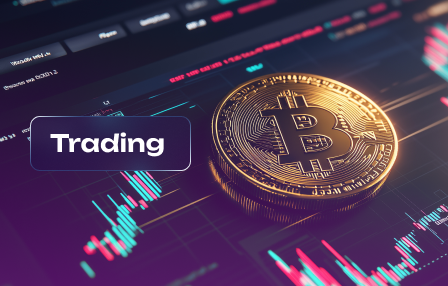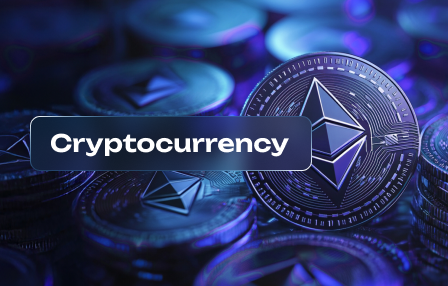How to check gas fees before sending crypto
May 5, 2025
Before sending any cryptocurrency, it’s critical to check the gas fees associated with your transaction. Gas fees are the costs required to process and validate transactions on a blockchain network. These fees can fluctuate based on network congestion and demand, which directly impacts how quickly your transaction will be confirmed.
To check gas fees, start by accessing your crypto wallet. Most wallets provide real-time data regarding current gas prices, allowing you to estimate the cost of sending your funds. Utilize tools such as Etherscan or Gas Station, which offer insights into average, fast, and slow transaction fees on the Ethereum network. Knowing this information enables you to choose an appropriate fee that balances speed and cost.
When preparing to send crypto, consider adjusting the gas limit in your wallet settings if applicable. Setting a higher gas limit can expedite confirmation but may increase costs. Conversely, opting for lower fees could result in longer wait times during periods of high network activity. Always double-check these values before finalizing your transaction to ensure an optimal balance between speed and expense.
Understanding Gas Fees Basics
Gas fees are the costs associated with processing transactions on a blockchain network. These fees are paid in cryptocurrency and compensate miners or validators for including your transaction in the next block. When you send crypto, it’s essential to understand how gas fees work to ensure your transaction is processed efficiently.
The amount of gas required for a transaction can vary based on network congestion and the complexity of the operation. For simple transfers, lower gas limits may suffice, while smart contract interactions typically require higher limits due to additional computations.
To check current gas fees, use online tools or resources that provide real-time data about the network’s status. Many wallets also include this functionality, allowing you to view estimated costs before finalizing your transaction. Always consider adjusting your fee according to urgency; higher fees can expedite processing during peak times.
Remember that choosing a wallet that displays accurate gas fee estimates can significantly impact your experience. Prioritize wallets that integrate seamlessly with fee-checking tools for optimal performance when sending crypto.
Using Blockchain Explorers
To accurately check gas fees before sending cryptocurrency, utilize blockchain explorers. These tools allow you to monitor real-time network activity and transaction costs associated with your specific cryptocurrency.
Access a reliable blockchain explorer for your crypto, such as Etherscan for Ethereum or Blockchair for Bitcoin. Input your wallet address or the transaction hash to view detailed information about recent transactions and their respective gas fees.
Look for metrics like average gas price, gas limit, and transaction confirmation times. This data helps estimate the cost of sending your crypto based on current network conditions.
Many explorers also offer charts displaying historical gas prices. Analyze this data to identify trends that might affect your transaction fees. For instance, periods of high network congestion typically result in increased costs.
Some explorers provide suggestions for optimal gas prices, indicating what fee will likely ensure timely confirmation of your transaction. Always compare these estimates with those from your wallet interface to make informed decisions about sending your crypto.
Wallet Integration Options
To check gas fees before sending cryptocurrency, utilizing wallet integration options can streamline the process significantly. Here are some effective methods:
- Built-in Fee Estimator: Many wallets come equipped with a built-in gas fee estimator that provides real-time cost estimates based on current network conditions. Check your wallet settings to enable this feature.
- Custom Fee Settings: Some wallets allow users to set custom transaction fees. By adjusting these settings, you can decide how quickly you want to send your transaction while estimating the associated costs.
- Integrated Blockchain APIs: Wallets that integrate blockchain APIs can fetch live data regarding gas prices from various networks. This allows for accurate fee checks before initiating a transaction.
Consider wallets that provide multiple network options, as fees may vary significantly across different blockchains. Always review and compare estimated fees displayed by your wallet with other sources to ensure you’re making informed decisions before sending transactions.
Additionally, it’s beneficial to use wallets that support fee tracking features, enabling users to monitor historical data on gas fees. This information can help in predicting future costs and optimizing your transaction strategies.
Comparing Different Networks
To effectively check and estimate gas fees before sending crypto, understanding the differences between various networks is crucial. Ethereum remains one of the most widely used networks but often incurs higher transaction costs due to congestion. Alternatives like Binance Smart Chain (BSC) and Polygon offer lower fees and faster transaction times, making them attractive for users looking to minimize costs.
When comparing networks, focus on the average gas fees for standard transactions. For instance, as of recent data, Ethereum can have gas fees ranging from $5 to $50 during peak times, whereas BSC typically maintains fees below $1. Polygon often sees even lower costs, frequently under $0.10 per transaction.
Consider using tools that aggregate data across multiple networks to get real-time fee comparisons. Services like GasNow or EthGasStation provide insights into current gas prices across platforms, allowing users to make informed decisions about where to send their crypto based on cost efficiency.
Always evaluate the network’s security and decentralization alongside transaction costs. While cheaper options may appeal for small transactions, larger transfers may warrant the reliability of more established networks despite higher fees.



